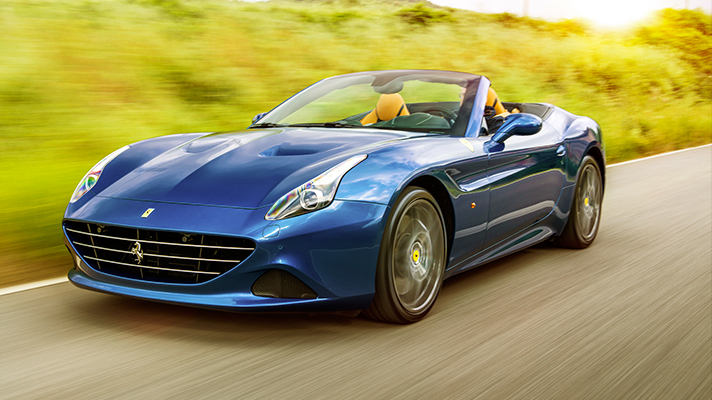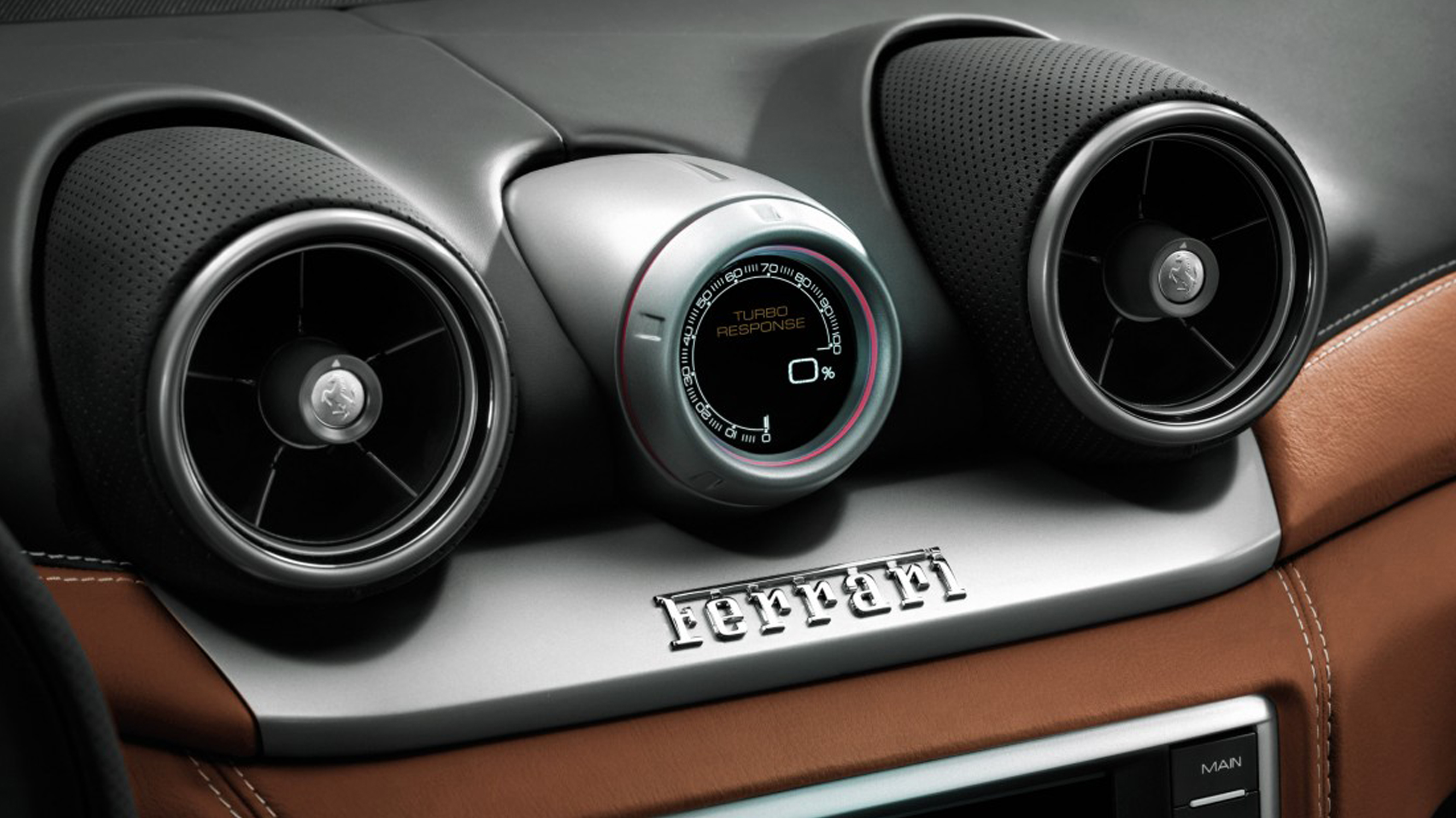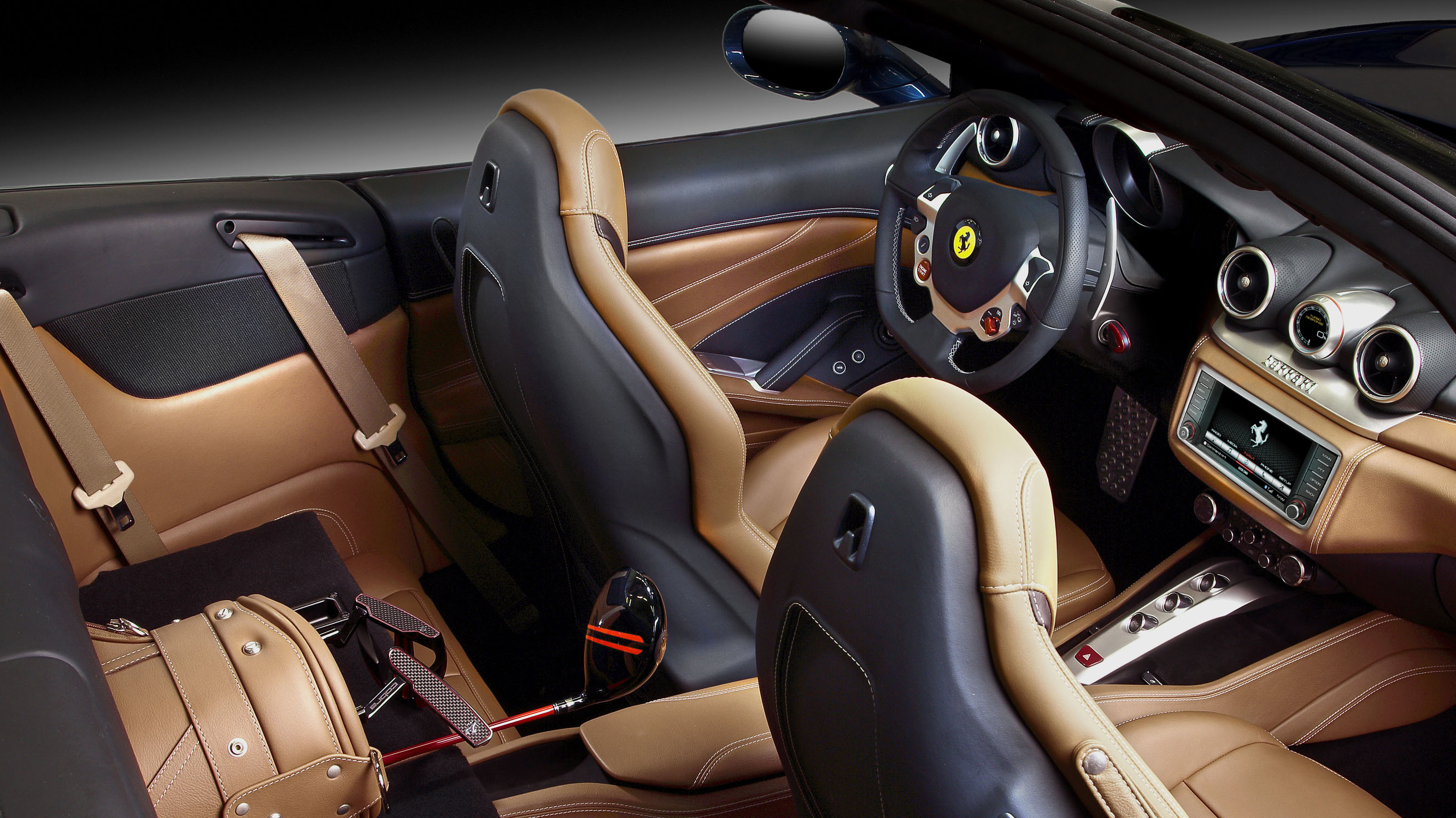
SPEC HIGHLIGHTS
- BHP
560bhp
- 0-62
3.6s
- Max Speed
196Mph
- Insurance
groupN
Self-appointed guardians of Ferrari’s soul gave the company a right kicking when it launched the California five years ago. Apparently, to build a relatively usable convertible was none of Ferrari’s business. Even though some of its past greats, like the 330 GTS and 250 GT California, were exactly that format. And, actually, the California has been one of the best-selling Ferraris ever.
Now there’s another storm brewing because the new California, the T, has a turbocharged engine. Again, the voices are raised that it’s not what we want from Ferrari, thank you very much. Even though some of the past greats, such as the 288 GTO and F40, also had just that sort of engine.
Hey, be happy people… it’s not like it’s a diesel SUV or anything. But the decision to go turbo always carried a risk, openly acknowledged by Ferrari engineers, that the result would emerge bereft of the blazing-fast throttle response, primal scream and dizzying revs that make the current generation of Ferrari engines so life-enhancing.
If Ferrari knew it was risky, why do it? Fuel consumption. Contrary to myth, Ferrari can’t just lose its thirst and CO2 numbers in the giant bulk of Fiat’s average. For this purpose, it stands independently. But neither is it bound to the same 90g/km target as the mass manufacturers. Ferrari, along with McLaren, Aston and others, gets an exemption as a small manufacturer, but only so long as it shows willing and gets its CO2 onto a clear downward trend. The Cali T has dropped to 250g/km from the old V8’s 299, and they say the real-world consumption will fall in similar ratio.
The hybrid KERS system on the LaFerrari is one way to boost efficiency – indeed, it’s more effective than turbos, says Ferrari boss Amedeo Felisa. But it’s also expensive and complicated and heavy, and Ferrari didn’t realise how expensive and complicated until it actually came to do it. Felisa wears an expression that says they won’t be going down that road again any time soon. Turbos, on the other hand, are known technology, and because they allow a smaller engine, they didn’t add to the weight of the California at all.
But doing a puffer job that feels like a modern Ferrari engine wasn’t so simple, either. It took a couple of years’ head-scratching and then four years’ development. Which ended up with this all-new 3,855cc V8 of a stonking 552bhp, power that’s enough to see off that pesky SL63 AMG. The engine is nothing to do with the Maserati Quattroporte’s unit, by the way. Why 3,855? Well, says Felisa, some countries charge huge tax if it’s not under 4.0 litres. But it’s quite a way under 4.0 litres? He smiles and says they can do a bigger one soon. That’s code for “Next year’s reworked turbo 458 replacement will be about 3,999cc.”
It’s extremely compact, fitting entirely behind the California’s front wheels’ centre lines, and tucks its turbos low down on the outboard side of each bank. The anti-lag techniques are industry standard: the blowers are small, and their turbines have twin inlet scrolls from paired cylinder exhausts for smooth gas flow. Also helping cut lag and emissions, the engine itself has direct injection and variable cam timing.
To make sure the thing sounds right, it has a pair of insanely complex (read expensive) multi-casting exhaust manifolds that look like a nest of vipers. This keeps each tract the same length, and from that issues sweet harmonics.
And as for the torque business, well, the engine is capable of 557lb ft in seventh gear, over a range of 2,500–5,500rpm. But in first, second and third, the torque is limited at low revs to about 410lb ft, and then rises towards a peak at 6,000 – like a naturally aspirated engine. The curves for fourth, fifth and sixth are progressively more like the one for seventh. (Some cars do this to save twisting the driveshafts like a barber’s pole, but not here, say the engineers.)
Well, it all sounded a bit silly to me at first – whatever possessed them, in an engine with a prancing horse cast onto its red-painted cylinder heads, to deliberately limit the performance? Is this not like chiselling an inch from the manhood of Michelangelo’s David?
Top Gear
Newsletter
Thank you for subscribing to our newsletter. Look out for your regular round-up of news, reviews and offers in your inbox.
Get all the latest news, reviews and exclusives, direct to your inbox.
Yet it does make sense. In the upper gears, the car surges forward on an immense wave of low-rev torque. And as they claim, once you’re above 2,500rpm, lag really is inconsequential. That sort of easeful muscle is good for a GT on the motorway. But, by the same token, delivery is why turbodiesels never quite excite us, because their torque is always there at low revs, so you’re discouraged from holding a gear and going higher up the dial. In this Cali, things are different. In
the low gears, the acceleration rises as revs climb around the big yellow dial. This means it’s worth keeping your foot in, and worth shifting down to get the full beans. Plus, it’s easier to predict how much effort goes to the tyres: you’re only going to break traction if you’ve properly prepared for it and got the gears and revs just-so.
It is, in other words, a properly involving engine. And, if you use the revs properly, a blisteringly fast one. Ferrari says it’ll do 0–62mph in 3.6 seconds, and 0–125 in 11.2. Which is both entirely believable and very much not hanging about.
Going to nibble the 7,500rpm red line gets a pretty stimulating sound too. Not the blare of the 458, no, but this is a different sort of car. It’s quieter, and a less aggressive harmonic. To be honest, I’d prefer the V12 orchestra of an Aston DB9 at high revs, but I do like the Ferrari turbo’s compromise when dawdling: it sounds fruity, but there’s none of the antisocial and false loudness that comes with the Sport button on too many fast cars nowadays.
While it was adding this extra power to the California, Ferrari tweaked the chassis, with slightly firmer springs to aid the handling, plus lower-friction and more adaptable dampers to help the ride. It’s got amazing traction: I had a job shifting the back end outward for photos, even when going repeatedly round a hairpin. In the rest of a day’s driving, it simply never felt likely to happen. And anyway, the traction control in Sport mode is adaptive and fabulously effective.
In all, then, a very composed cornering machine, even on bumpy roads. You feel at every swerve that the weight figure isn’t at all bad for a big GT with a folding hardtop, and the rigidity is mighty impressive, too. That’ll be the aluminium structure. But compared with the original Cali, the engineers also quickened up the steering rack. I wish they hadn’t. It’s so urgent, which doesn’t quite match the weighting, and the issue is compounded by a lack of feel. I found myself rounding too many corners in bites, like I was circumnavigating a 50p. That sort of nerviness isn’t ideal for an ‘everyday’ tourer.
The ride, though, is close to ideal. Despite all that control, the way the car absorbs both big road-turbulence and little pineapple-textured roughness is a revelation.
So it really does act like a great and glamorous touring sports car. But I feel like I’m driving a Ferrari wearing very thick gloves and earplugs. By Ferrari’s customary sky-high level of sensory involvement, this one feels rather remote, even if it’s more engaging than an SL. Maranello’s marketers would no doubt argue this muted character is appropriate for their everyday car. But the FF is for everyday, and that’s a wonderful sensory experience.
After my drive, Felisa asked me what I thought, and I advanced that argument. He said the FF is supposed to be more sporty. It’s also more expensive. He added that the FF isn’t getting as many new customers into Ferrari as they wanted, whereas the Cali abundantly is.
Those buyers will surely love the fresh looks. All external panels except the roof sections are new. The old car’s down-in-the-mouth look has given way to a nicely chiselled nose. Well, I think so. Our photographer Rowan says the front end was hostile to shooting on the move because it has a confusion of angles in the bonnet, but I say few people will be looking at your Cali from the boot of the car in front, so that doesn’t matter. At the rear, the old over-tall look has turned into something wider, smoother and more road-hugging. An under-bumper diffuser might not seem appropriate to a blithe summer cruiser, but then you remember it can hit 196mph: aero very much matters.
Inside, there’s a new nav/media system at long last. On the day we drove, it had glitches, but they say it was still in beta. Apple CarPlay will soon be added. Seats and dash are new too, looking good, working well and clad in characteristically fragrant leather. Some plastics look cheap, and I suspect this is a ploy to nudge you into springing £5,568 for carbon-fibre decor. You don’t need the wind blocker, even at roof-down motorway speed, as you can run roof-down with all four side windows up. The roof-down boot isn’t a bad size and extends by dropping the rear seat backs. Plus, its lid is deep, so it’s easier to get to than in other folding hardtops. We don’t as a rule mention the luggage-area aperture in a Ferrari test, but this, remember, is the Ferrari for people who don’t normally buy Ferraris.
Featured

Trending this week
- Car Review
BMW iX3







